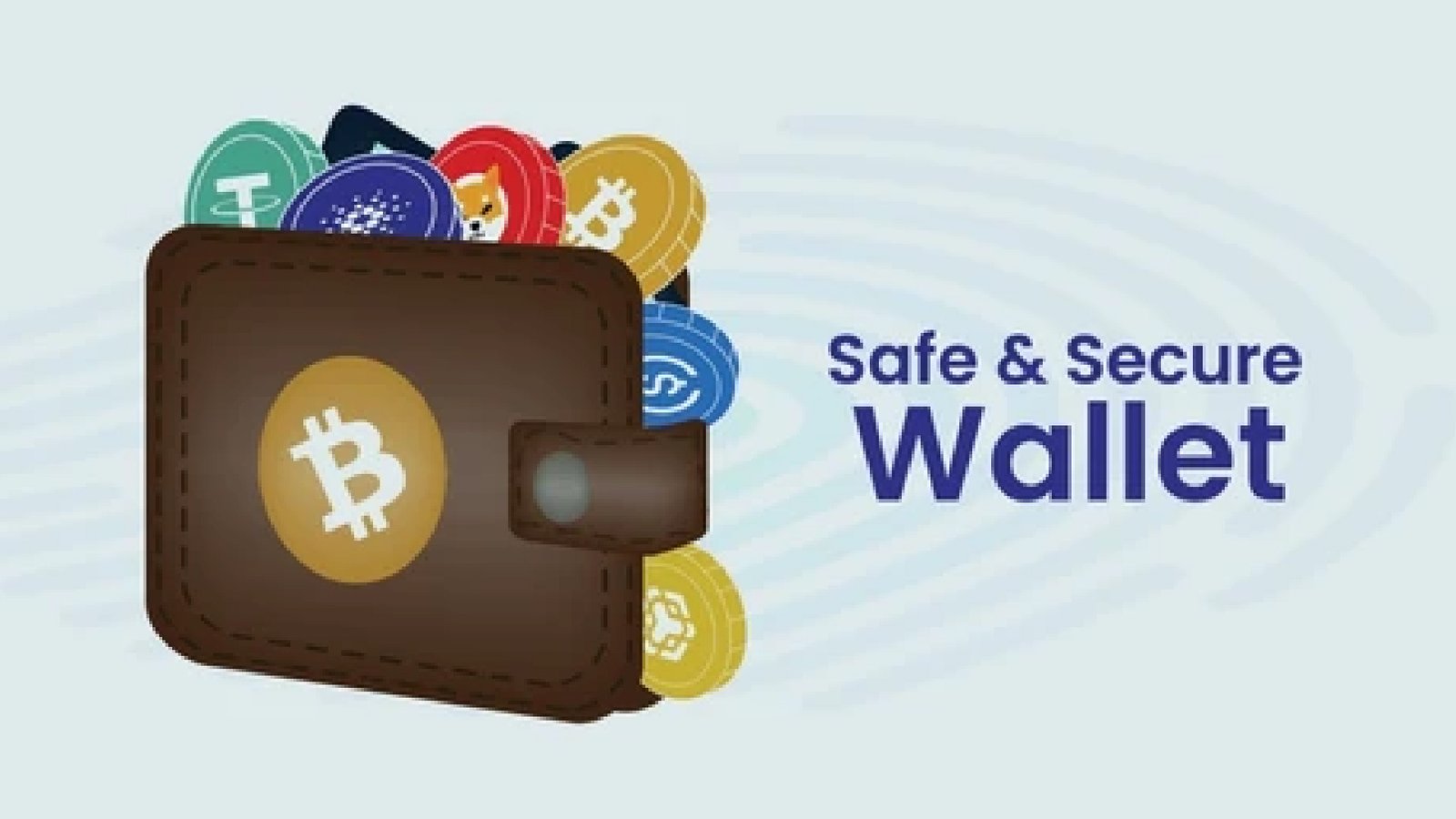
How to store Cryptocurrency Safely
As it is clear to everyone that trading in cryptocurrency is a risky game. So before purchasing any digital assets, it is strongly recommended to get complete knowledge about how and where to purchase the cryptocurrency. And most important is knowing how and where to store the cryptocurrency after purchasing it. Keeping your crypto safe and secure is your responsibility.
As it is a risky investment and is full of scams, hacks, frauds etc. People have also lost their assets because of losing their wallet keys (or passwords. So in this article, we are going to discuss different ways of storing your crypto and different factors you need to consider before choosing the storage option according to your protection and accessibility needs.
Ways to Store Cryptocurrency:
Storing the cryptocurrency is not like storing money in banks and it remains safe there. It’s different than that. You will need crypto wallets to store your assets, custodial wallets, or non-custodial wallets. Before discussing their types we should know why it is so much important to store and strongly secure your crypto.
Need to Store Cryptocurrency:
Cryptocurrency also known as digital currency is not owned by a single individual or organization. It works on the decentralized network known as blockchains. The exchange of the crypto between different accounts takes place through secure and encrypted transactions on the blockchain.
Investors need crypto wallets to store the currency, and to make exchanges of the cryptocurrency between different accounts as the funds are accessible only through these wallets. You can send and receive the funds by sharing the address of the wallet also known as the public key. You also have a private key for your account and the wallets are used to store and secure these keys.
Protecting your private key is so important as it is the unique password (a long string of letters and numbers) through which you can access and manage your funds. Losing your key is similar to losing your assets forever. Mostly crypto thefts are made through accessing the private keys of the investors through hacking exchanges or wallets, through scams, and by fraud and tricking the investors into revealing their keys.
Seed Phrase:
There is one way to recover your wallet if you have Lost your key and access to your wallet, and that is the seed phrase. The seed phrase is a string of 12 to 24 words that are used for the recovery of your wallet’s access. This can be depicted as, the private key being the password of your account and the seed phrase being used to recover your account, in case you forget the password.
It is also important to protect your key as the transactions made on blockchain are irreversible. If you have entered the wrong key or address, due to its decentralized nature, there is no third party, exchange, broker, or government responsible for protecting your assets if something goes wrong.
Methods to Store Cryptocurrency:
Different methods are used to store the crypto assets. Let us discuss these methods one by one. Various methods are:
- Custodial wallets
- Crypto exchanges
- Cold wallets
- Hot Wallets
- Physical paper storage
Although no storage method for cryptocurrency is 100% secure, you have to choose one for storing your assets.
1. Custodial Wallets:
Custodial wallets are those in which the third party stores the assets either in cold or hot storage or a combination of both. On purchasing the crypto from any exchange, broker, or app they put your crypto in the wallets under their custody. But if you want to move your assets to a personal wallet, you can transfer them.
It’s important to remember that not all the apps and stock brokers allow to transfer the funds to another platform. This means that the users cannot get the private keys. You need to use their custodial wallets if you purchase from them.
2. Crypto Exchanges:
Crypto exchanges provide custodial wallets. There are marketplaces where you can buy cryptocurrencies from real money, trade between different types of the crypt, sell your crypto and convert it back to real money. You need to trust the exchange to secure your assets.
Binance, Kraken, Coinbase, and eToro are some of the popular, convenient, and user-friendly crypto exchanges and are considered centralized as they operate like any other online platform. Decentralized exchanges are also available but they are usually complicated to use.
Steps to Store Cryptocurrency in Exchange:
- First of all, explore different exchanges and compare the facilities provided by them. Choose the one that supports various types of crypt and has good user reviews, and it should be supported in the countries you want to trade in.
- Now you need to make an account with your chosen exchange. It usually takes five minutes to set up your account if you succeeded in satisfying the exchange’s KYC (know your customer) requirements.
- You need to enter your personal information including your name, email address, phone number, etc. To verify that you are a real person you may also need to submit your government-issued ID, utility bills, or some other documents.
- Then after completing the KYC requirement, you can set up your wallet and deposit and store your crypto there. For this, you will need the wallet address that you can anywhere on the screen, a string of 40 alphanumeric characters, or it will appear when you start to initiate a deposit transaction.
Advantages:
Although custodial wallets are not that much secure as compared to personal wallets, are a convenient method for investment.
- You don’t have to do a lot of work, as the exchange controls your crypto.
- For trading in crypto, it is convenient and easy to access the crypto as it is stored in your account.
- You can access the crypto as long as you access the account, and you don’t need to worry about losing your wallet.
Risks of Storing Crypto in Exchanges:
Exchanges are at risk of being attacked by hackers. If the exchange is hacked there are chances to lose your crypto forever, no matter if your wallet keys are safe.
Cold Wallets:
Offline wallets that are not connected to the internet are called Cold Wallets. These are generally physical devices like a USB or a specifically designed device with special protection and accessibility features to store the crypto. These are also known as hardware wallets.
You can connect these hardware devices to your computer at the time of sending and receiving the cryptocurrency.
Steps to Store Cryptocurrency in Cold Wallets:
- First of all, you need to buy a portable hardware device like USB. It is recommended to purchase a USB the blue tooth connectivity.
- Downloading software on your PC as most devices come with a USB Drive that may need help to connect to your device directly.
- Protect your PIN as well as the seed phrase, as if you forget the phrase you won’t be able to recover your wallet and it will be lost forever and will disappear on multiple attempts of entering a password.
- For each new crypto you purchase make a new wallet address for it, and it will help you to transfer your funds from other wallets to your cold wallet.
- Now you can send your crypto to the new address of the cold storage wallet. And make sure and check twice that you are sending crypto to the right address as the transactions made are irreversible. For example, if you have sent your Bitcoin to the Ethereum address you will lose it forever.
Risks of Storing your Crypto in Cold Wallets:
Cold storage is the safest way to store your crypto. But if you have lost your device or get stolen by someone you will lose your crypto. Other risks are fire damage, non-functional devices due to water, or the device getting broken due to any reason. If you don’t have the backup and seed phrase you can’t get your crypto back.
Hot Wallets:
Got wallets are the ways used to store the crypto on online platforms. These hot wallets usually consist of mobile and desktop applications, and web-based hot wallets are also available.
Got wallets are easy to use and quickly accessible and are used for the fast sending and receiving of cryptocurrency. They are usually free and you will have full control of your assets. The only major problem with this type of wallet is that as they are connected to the internet so have more chances and risks of being hacked.
On losing the wallet access the only way like the cold wallets to recover your wallet is the recovery phase. You can use this phrase to recover your wallet if you lose your password or are hacked.
Steps of Storing Cryptocurrency in Hot Wallets:
- The first step is to set up your wallet, which usually requires a continuous internet connection and the whole process takes 10 to 15 minutes.
- You need to complete the KYC requirements that is a must for most of the hot wallets and some allow you to skip the step to do it later.
- Some additional settings for individual cryptos are also required for some wallets to manually add and manage the cryptocurrencies while some wallets don’t need to be set up separately.
- Once your settings are complete and your wallet is ready to accept the cryptos, you can share the address with anyone to send you the coins.:
Risks of Storing your Crypto in Hot Wallets:
The risks related to hot wallets are almost the same as the exchanges. If you have installed some malware on your device or your device gets hacked you will lose your crypto forever. But the hot storage is considered a bit safer than storing the crypto in the exchanges.
Physical Paper Wallets:
Another type of cold store that is free is a physical crypto wallet which is also known as a paper wallet. These are usually the printouts of the wallet’s keys, both private and public keys, as long strings of characters or also in the form of QR codes.
To make the transactions these keys are used. For receiving the crypto you can use the public keys printed on the paper. While for sending the crypto you need to scan both the keys, private as well as public.
The main advantages of the paper wallet are it provides maximum security by keeping the keys safe offline and no chances or zero vulnerabilities of hacking. Second, it is the cheapest way to store the crypto with maximum security.
Besides, paper wallets are not user-friendly and the learning curve is too small.
Steps of Storing Cryptocurrency in a Physical Paper Wallet:
- First of all, you need a computer that is free of any type of malware. Because making the paper wallet with the affected computer can be unsafe and vulnerable for your crypto assets.
- Then visit any trustworthy site that provides a paper wallet generator. These sites are usually free for making your required credentials in a few seconds including the public and private keys.
- Generate the number of addresses that you may require. Some sites offer to generate up to 10,000 addresses at once.
- To store these credentials offline, you need to print out the wallet. The best practice is to fold the paper in such a way that the addresses are showing outside and the private keys should be in the inner flap. This will protect the private key from any person seeing it at a glance.
- After sending the crypto keep this wallet in the safest place away from moisture and heat. You may make two to three copies to place them in different places.
Risks of Storing your Crypto in Physical Paper Wallets:
As paper has the chances of physical damage, wear and tear, damage by heat or moisture, or misplaced. It is also easy for robbers to rob your paper. In case of robbery, the copies of the paper wallet will not help you as the private key is printed on each copy.
Some Tips For Storing Your Crypto:
Here are some best practices and tips you need to follow to save your crypto.
- Do your research for making a cryptocurrency account, and check out who runs the exchange, the website is not suspicious, as so many things crypto industry are anonymous.
- Confirm the authenticity of the company’s website. Check out the comments of the people related to these sites on social media platforms.
- Understanding the basics is so important as crypto is money and needs to be placed in a safe place away from hackers, scammers, or con artists.
- The safest storage method is the cold method. So you need to store most of your crypto in cold storage as long as you are not willing to trade.
- If you want to trade, transfer a small amount of crypto to the hot wallets that are required for the trade, and will be easily accessible through the hot wallet.
- Keep your recovery phrase as safe as possible.
- Never share your private key or the seed phrase with anyone and also try not to save it on your PC, mobile, or other devices connected to the internet.
- It is also a best practice to physically write down your seed phrase of crypto wallet and place them at the safest places only accessible to you.
- Know the risks related to crypto investments and all the storage methods.
Final Words:
After jumping into the crypto industry make sure to use the best practice and safest ways. Always choose the exchange with the best security features including two-step authentication.
If you are not good at keeping passwords we will recommend using custodial wallets to keep assets safe. Only you are responsible for storing and keeping your keys safe, so do all your efforts and learn all the ways and risks related to it.
This article was written only for educational purposes and is based on the data presented online. Thanks for visiting.
Frequently Asked Questions:
Q: Is there any way to Recover your Wallet if you lost access to it?
Answer: The only way to recover your lost wallet is a seed phrase. The seed phrase is a string of 12 to 24 words that are used for the recovery of your wallet’s access.
This can be depicted as, the private key being the password of your account and the seed phrase being used to recover your account, in case you forget the password.
Q: What is the Safest Way and Best Practice to Store Your Crypto?
Answer: Cold storage is the safest way to keep your assets safe as long as possible. The best practice is to move only the amount of crypto to the hot wallet that you want to trade with, as it is easier to access the crypto from hot wallets during the trade.
Q: Can you Store Different Types of Crypto in one Wallet?
Answer: Yes, different types of cryptocurrencies can be stored in single wallets. Most wallets automatically create separate addresses for each type of crypto, while in some wallets you can manually add new wallets for each type.






